#French industrialization
Explore tagged Tumblr posts
Text
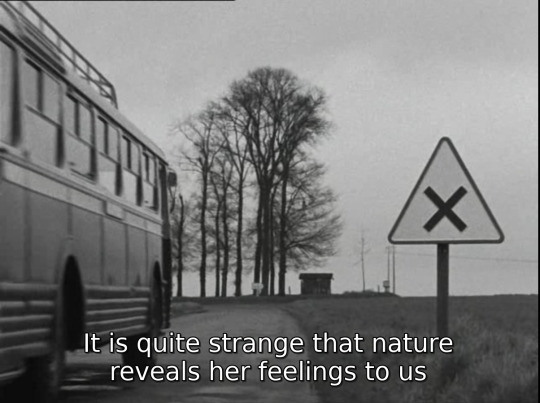

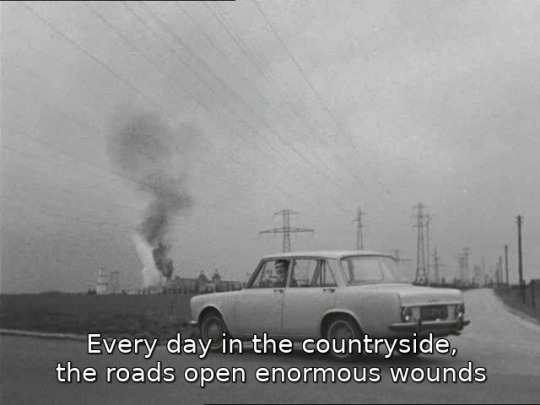
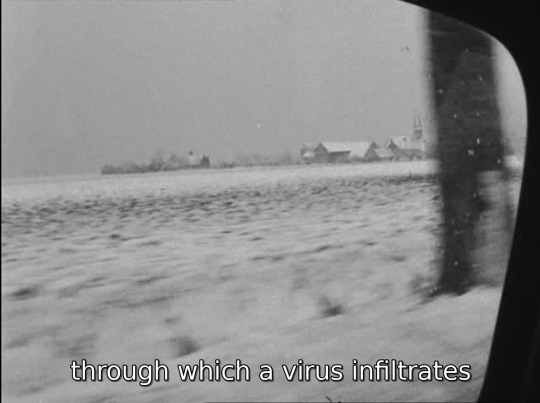

L'ère industrielle: Métamorphoses du paysage: Dir. Éric Rohmer 1964 (Changing Landscape)
#my screenshots#Black and White Cinema#Documentaries#Eric Rohmer#obscure#rare#short films#visuals#story telling#degrowth#L'ère industrielle#Métamorphoses du paysage#Landscapes#Changing Landscapes#French cinema#French industrialization#French New Wave
6 notes
·
View notes
Text

#dassault#dasault rafale#french navy#french air force#military equipment#military aircraft#military aviation#military industrial complex#military planes#military#army#aircraft#air force#us air force#usaf#fighter jet#aviation#fighter plane#plane#us navy#navy#aviation video#aviation photography#aviation history#naval aviation#aircraft carrier#photography#photoghraphers on tumblr#france
109 notes
·
View notes
Text






ACIDE SEDATIF 4/5 [APR 1987]
French zine with articles about Garçons Bouchers / Pigalle / Los Carayos, Cabaret Voltaire, Ludwig von 88, Trodskids, Test Dept., Exploited, Swans, Die Kreuzen, GG Allin, Psychic TV, The Cramps, Sewer Zombies, Coil, Nightmare Culture, Reseau d'Ombres, Scream, Unity, Golgomax, and Fatal Impact.
119 notes
·
View notes
Text
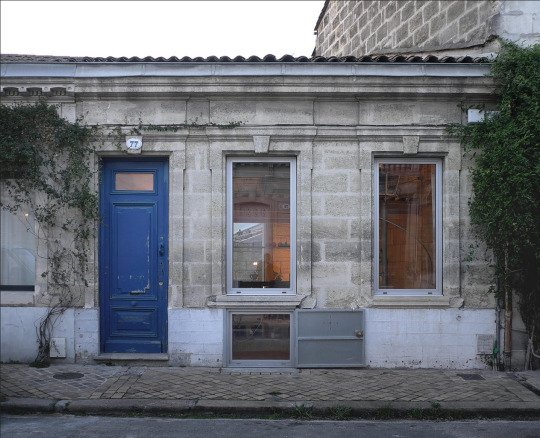


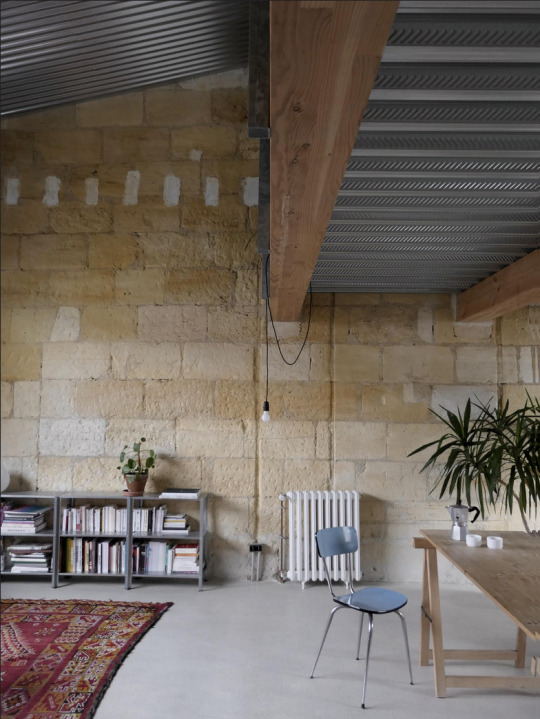
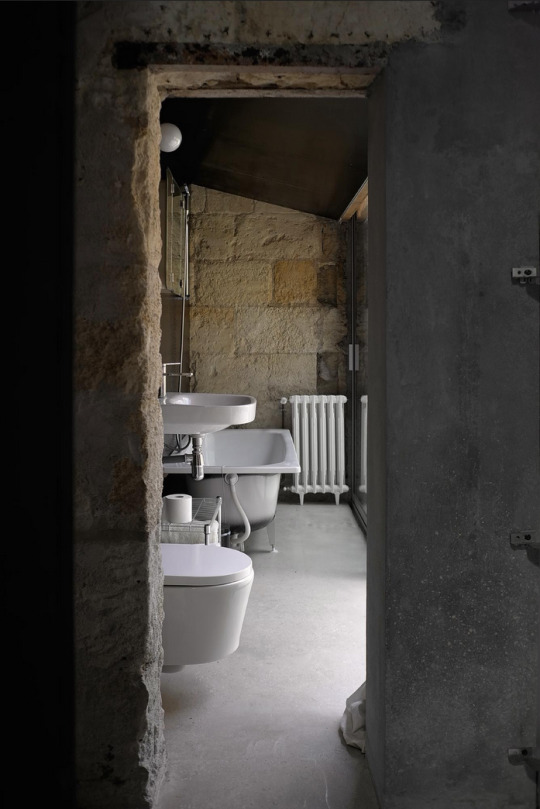
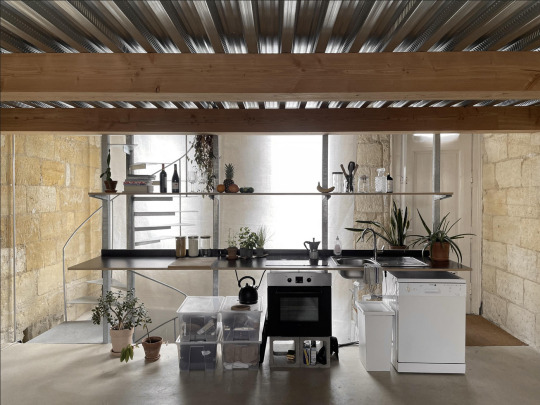

Fieffe Renovation, Bordeaux - LITTORAL
#LITTORAL#architecture#design#building#modern architecture#interiors#house#minimal#house design#old and new#renovation#stone#metal roof#concrete floors#industrial#bedroom#bathroom#cool design#france#french architecture
193 notes
·
View notes
Text

Sarah Moon, Villandry no. 12, 1992
59 notes
·
View notes
Text
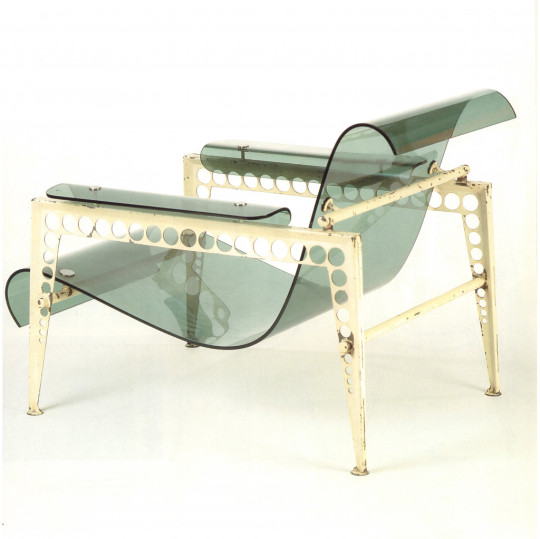
Garden Chair (1936-37) designed by Jacques André, made from acrylic glass and painted steel.
622 notes
·
View notes
Text

countless days pass by immeasurably;
anniversaries gutter in the maelstrom
#iwtv#louis de pointe du lac#interview with the vampire#iwtv amc#ldpdl#vampterview#louis#art#mine#*24#i made this a week ago + was on the fence abt posting it bc its v self indulgent but the new ep drops tonight so. why nottt#if les gets to be a rockstar or w/e then my special princess louis gets to be a goth. he looked soooo good in e7 w/ smeared eyeliner <3#i feel like he could like some goth music! prob more trad stuff than like industrial or rock. anyway i started looking into the history of#goth subculture + black culture in america bc i knew they had a connection (blues music/jay hawkins etc) and it was rly interesting#like thru blues it has a connection to new orleans. fun#i listened to attention dépression by les clopes on repeat during this lol. idk enough french to even begin to transcribe it tho
89 notes
·
View notes
Text
I’m so goddamn tired. I hate it here so fucking badly. I hate it here. It’s 2024. We know better and yet we are pushing these ads and these dogs everywhere, STILL - why do we as a society love animal cruelty so much?? I will never understand.
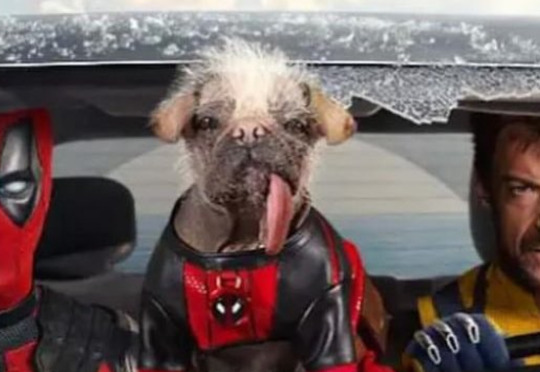
I’m going to be brutally honest - people are stupid. People will not open their phones to google for three minutes before buying an expensive dog, that lives for 15 years - and media affects people IMMENSELY. Remember how everyone and their mom got a husky (an extremely hard dog to keep, because they’re working sled dogs) after game of thrones? How every single child got a rat after ratattouille, and how most likely a lot of them were abandoned? This happens with frenchies and pugs as well because they are featured EVERYWHERE.
”Oh wow its so ugly i love it ;;” ”Oh it’s so cute I want one!!” No. Dogs who need surgery where you cut their nostrils open just to be able to breathe a /little/ better is not something you should want or support. Animal cruelty is not something you should want or support.
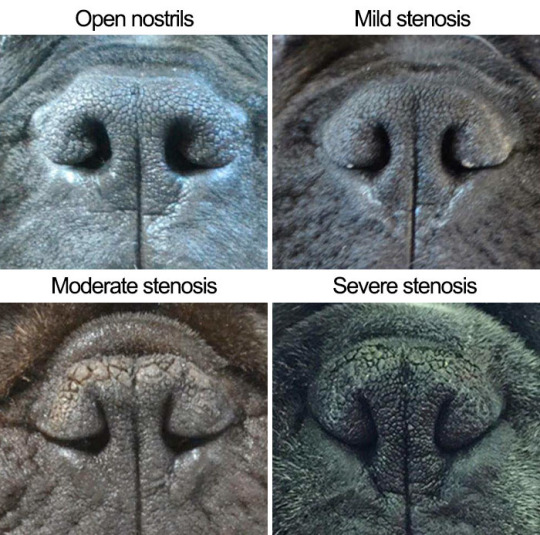
This is a chart for assessing stenotic (pinched) nares in brachycephalic dogs. The open nares seen here are not even actual normal nares - this is what they look like in non-brachy dogs.
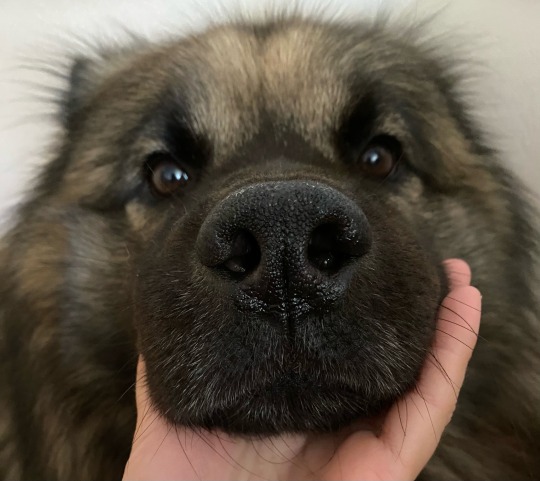
There is no other way to say this: these dogs can’t breathe. That’s why they make noises like little pigs - they can’t actually get sufficient air into their lungs because their airways are so closed. They are partially suffocating - every single minute of every day.
Here’s the reasons why:
- the nostrils are closed. you can see how hard and panic-inducing it is to ”breathe” like that by pinchig your own nostrils for a little while. it’s very common to have surgery to cut the nostrils open - but even if it might help a little bit they’re only ONE reason why these dogs suffer
- the face is flattened - this is why the tongue cant actually fit in their mouths, which of course makes the tongue constantly dry and uncomfortable. they also have teeth problems because, again, the teeth literally cant fit in their mouths. they also can’t cool down the way dogs normally do by panting - because the area in their nasal cavity where this happens is extremely small. this, together with the breathing issue, makes them extremely prone to over-heating and dying as a result.
- their soft palates are, again, too big for their mouths and make the dogs’ airways more closed as a result. surgery to cut this soft tissue away is common.
- their laryngeal sacculis are often inverted - think of a pocket of your trousers that is turned inside out. these sacs are located in the back of the throat and further obstruct the airways
- laryngeal collapse is also not uncommon
- their tracheas are VERY thin. That’s why breeding for a different type of bulldog and pug etc is important and thats why ONLY opening the nares and lengthening the snout is not the answer - if the trachea is the dimension of a straw, they will still be unable to breathe properly - and you can’t assess this without image diagnostics, of course…
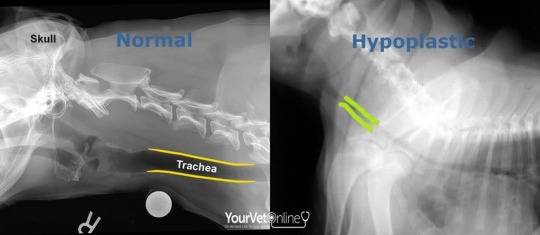
- because these dogs struggle to breathe and are prone to over-heating they can have trouble exercising and this easily get overweight. The extra fat will collect around the neck, amongst other places, and this can pinch the anatomy of the throat and airways of the neck even further
- some symptoms of BOAS (brachycephalic obstructive airway syndrome) that people find ~cute and unique include:
-> snoring loudly and snorting when breathing. This is because of the obstructed airways and means they struggle to breathe both while asleep and while exercising/walking
-> ”smiling” (pulling corners of the mouth up) and rolling the tip of the tongue is something seen when the dog is labouring to breathe
-> these dogs often find toys to keep in their mouths when they sleep - this is not normal, they do this deliberately because they can’t breathe.
-> these dogs are the ONLY dogs who will be happy about having a tube inserted into their trachea while undergoing surgery. Normally you remove this the second the dog starts to come to - because it is extremely uncomfortable having essentially a straw inside your airways - but for brachy dogs they enjoy being able to breathe fairly comfortably and they will sit fully awake with the tube for long periods of time. It’s heartbreaking.
PLEASE don’t get these dogs and please call out advertisements etc promoting them - because we all know that they are already extremely popular and that marketing sells even more of them. It’s downright evil, and it’s animal cruelty in the name of ~marketing. Yes of course there’s a lot of them in shelters needing adoption - BUT it’s very important to know what you’re getting into. A lot of these dogs DO need surgery to be able to breathe at least partially, and these are invasive and very expensive.
This was just off the top of my head but here’s a link with more info -> BOAS in dogs
#animal welfare#french bulldog#pug#deadpool & wolverine#sorry i know this is likely too long for anyone to actually read but i saw this as soon as i woke up and i get so extremely sad and upset#why do we not care about animal abuse and animal welfare?#why are we SO informed and rightfully advocating for so many good things#and then we’ll turn around and say ’oh i want one!’ about dogs who shouldn’t even exist#and cruelly mock and bully and judge people for not wanting to contribute to the absolutely horrific meat industry?#anyways……. i hate it here 🥰🤗🤗#wearing my ’trust me i’m a vet’ t-shirt#that i don’t own because i refuse to acknowledge the fact that i am….
64 notes
·
View notes
Text
guys this firefighter show bobby is working on is gonna be so stupid meta if he corrects an actor on the right way to do cpr im gonna scream
#911#9 1 1#911 abc#911 hotshots#bobby nash#pleaaaassse if they call themselves out of specific inaccuracies that'd be so funny 😂#it's definitely gonna include a bunch of in jokes about the industry and la 😂😂#mine#i hope it gives us a vibe close to the french mistake iykyk
37 notes
·
View notes
Text
i keep seeing people who didn't like the substance and its always because they clearly went into it expecting a nuanced subtle feminist horror masterpiece. you cant do that. you need to go in expecting a french woman making an updated 80s body horror practical effects nightmare. that's the way you won't be disappointed.
#you don't go in for perfect critiques of the industry you are here for blunt and mean and nasty and maybe silly at times.#like. yes the men are cartoonishly evil nothing is realistic or subtle that's the point. its a movie taking things to the extreme#that's what body horror does. & its exacerbated bc thats also what french horror does ime.#(not that im the most experienced but ive seen enough to know a LOT of them are like this)#avpost#im saying this to protect you do not go in expecting realism. go in excited to see a woman turn herself into the thing from the thing.#its literally called The Substance she is taking A Substance. the title warns you this is going to be blunt and unnuanced.#im not above criticism of this movie either i really didnt enjoy huge chunks of the middle im just#noticing this trend on lbxd and twt among people who don't like this movie#and i know ive hyped it up to my followers so im just getting ahead of that and warning you guys.#movie diary
18 notes
·
View notes
Photo

Maximilien Luce (French, 1858-1941), Couillet, La Nuit [Couillet, Night], 1896. Oil on canvas, 50 x 65 cm.
339 notes
·
View notes
Text

Mithra of VOX Populi!
26 notes
·
View notes
Text

#dasault rafale#dassault mirage#mirage 2000#french navy#french air force#french aircraft#french airplane#aircraft#air force#us air force#usaf#fighter jet#aviation#fighter plane#plane#us navy#military equipment#military aircraft#military aviation#military industrial complex#military planes#military#aviation video#aviation photography#aviation history#naval aviation
55 notes
·
View notes
Text
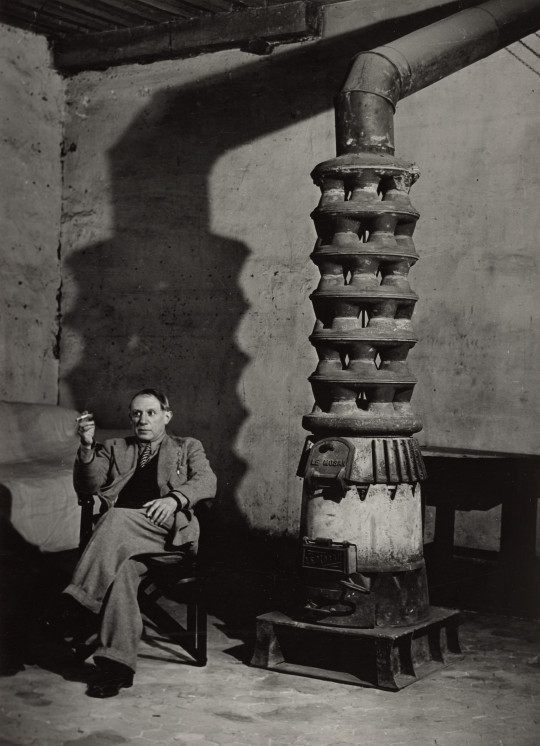
“PICASSO IN HIS STUDIO” BRASSAÏ // PARIS, 1939 [gelatin silver print | 11 5/8 × 8 7/16”]
#brassaï#brassai#pablo picasso#modern art#studio#film photography#analog#black and white#monochrome#paris#france#industrial#30s#hungarian-french#photography#u
142 notes
·
View notes
Text
Citizen Cooks in the Age of Napoleon
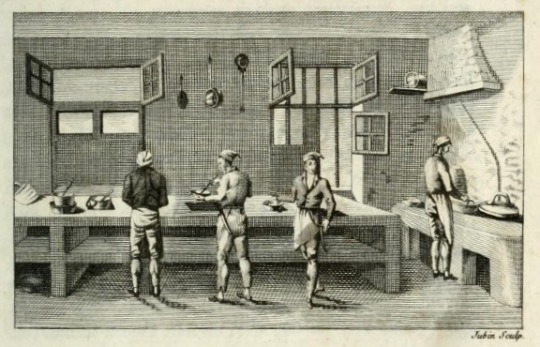
Excerpt about the role of cooks in France after the abolition of culinary guilds, and how they navigated a world which demanded for them to find new ways to stay relevant and prosperous. From Defining Culinary Authority: The Transformation of Cooking in France, 1650-1830 by Jennifer J. Davis:
French cooks sought new sites upon which to rebuild the authority of culinary labor. Throughout the early nineteenth century cooks increasingly adopted scientific terms to demonstrate their reliability and profound knowledge of the culinary arts. Such language communicated the author's education and distinction, just as an appeal to an elite patron had done in the 1660s and referral to a cook's professional expertise had done in the 1760s. The rhetoric and institutions of scientific knowledge also provided a means of distinguishing men's work from women's in the post-revolutionary era. During the early nineteenth century, cooks' claims to scientifically valuable savoir-faire rested on three crucial points of culinary innovation: food preservation, the improved production of bouillon, and gelatin extraction.
As these processes left the realm of traditional knowledge and became sites of scientific inquiry by tradespeople and amateurs alike, cooks sought to maintain authority in this arena by including scientific terms and theories in cookbooks, advertisements, and government petitions.
Two factors encouraged cooks' claims to scientific knowledge during this era. First, when Napoleon Bonaparte took the reins of government as first consul in 1799 and established himself as emperor in 1804, he raised medical doctors and academic scientists, Idéologues, to positions of political prominence. From these posts, the Idéologues subsidized experiments and inventions deemed useful to the nation and encouraged the popularization of science in the public sphere through state sponsorship of exhibitions and print forums. The Idéologues particularly supported research related to food preparation and preservation that might benefit France's armies and navies, with obvious benefits for professional cooks. Many cooks presented their particular techniques to the government during this time, seeking both financial recompense and public acclaim. Second, a voluntary association closely allied with the Idéologues' vision, the Société d'encouragement pour l'industrie nationale (Society for the Encouragement of National Industry), provided a forum in which formally trained scientists, politicians, merchants, artisans, and curious educated men might unite to address questions that inhibited French science and industry.
Together, these men sought to develop a more coherent program for industrial advancement than any one group could achieve independently. The society explicitly sought to join scientific knowledge to artisanal practical expertise, recognizing that each group had strengths that would benefit industrial development. This association invested heavily in three diffuse projects that eventually infused the most basic culinary processes with scientific awareness: new methods of food preservation to benefit the nation's armies and navies, new methods of stock preparation to sustain the nation's poor, and new methods of extracting gelatin from bones to improve hospital and military diets at little added expense.
#Illustration from L'art du Cuisinier by Antoine Beauvilliers (1814)#Defining Culinary Authority: The Transformation of Cooking in France 1650-1830#Jennifer J. Davis#David#citizen cooks#napoleon#napoleon bonaparte#napoleonic#napoleonic era#first french empire#french empire#19th century#french revolution#cooks#food#culinary history#france#1800s#history#french history#Antoine Beauvilliers#Beauvilliers#Society for the Encouragement of National Industry#Société d'encouragement pour l'industrie nationale
32 notes
·
View notes
Text

DERNIERE VOLONTE
#derniere volonte#geoffroy delacroix#martial pop#martial music#martial#post-industrial#industrial#industrial music#synth-pop#dark synth#synth#synthpop#modern classical#ambient#ambient music#electronic#electronic music#electronics#dernière volonté#neo folk#neo-folk#neofolk#martial music#music#french#electro#black & white
13 notes
·
View notes